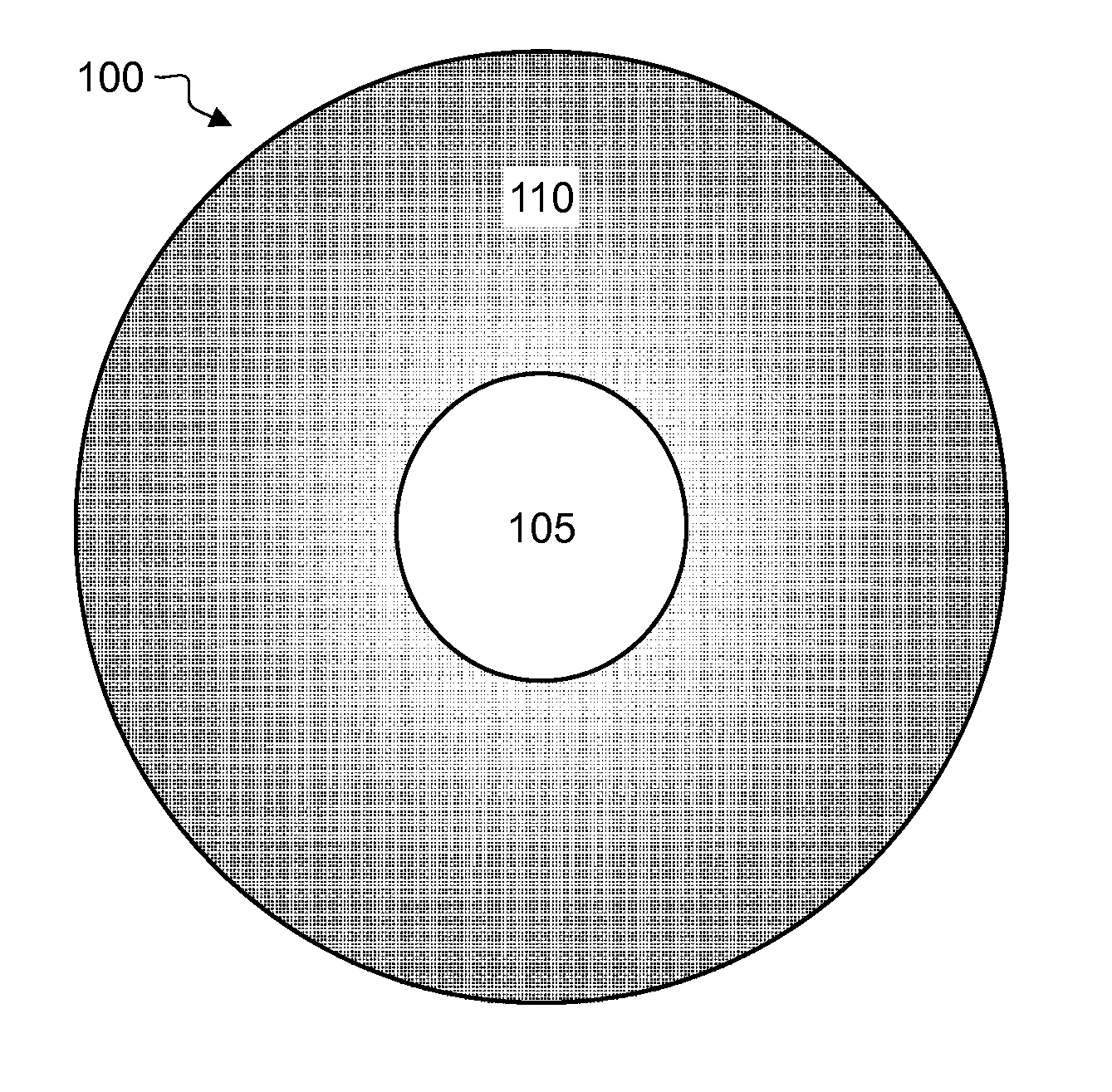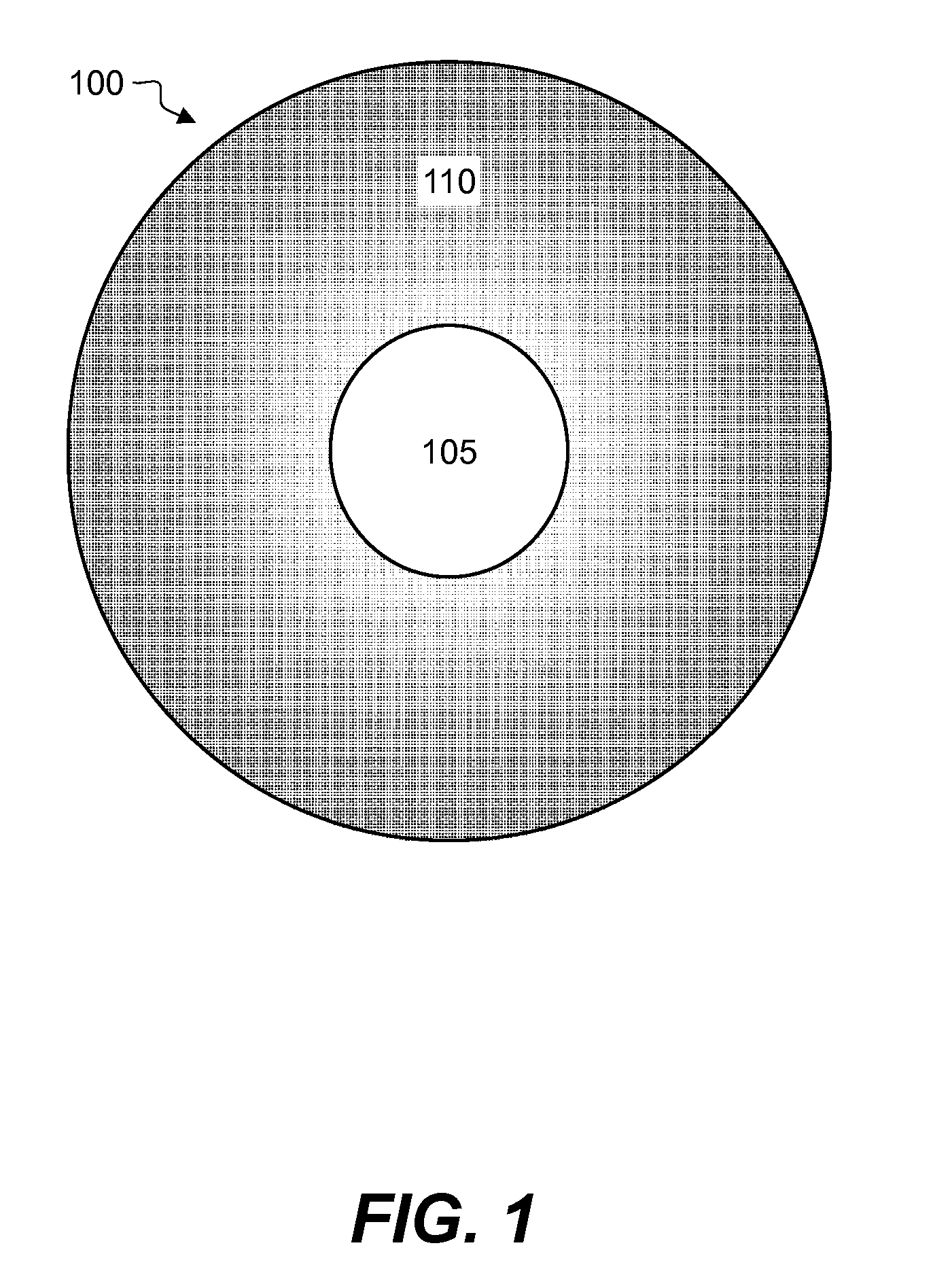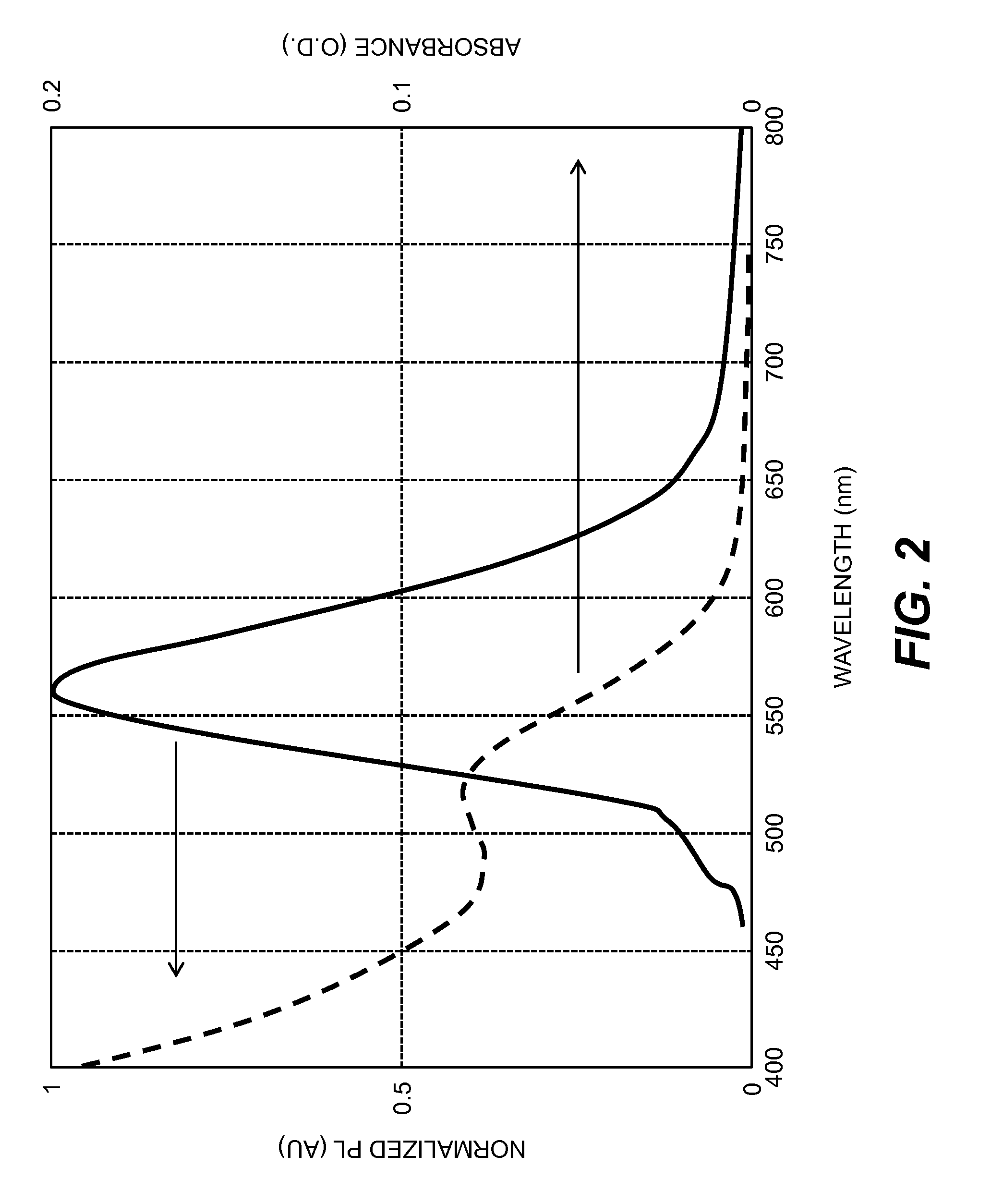Method of making highly-confined semiconductor nanocrystals
a nanocrystal and high-confined technology, applied in the direction of oxide conductors, non-metal conductors, conductors, etc., can solve the problems of thermal quenching of quantum efficiency, poor temperature stability, and difficulty in tuning the emission response, and achieve good quantum efficiencies, high confinement, and good quantum efficiencies
- Summary
- Abstract
- Description
- Claims
- Application Information
AI Technical Summary
Benefits of technology
Problems solved by technology
Method used
Image
Examples
example i-1
Preparation of the Inventive Shelled High Confinement Semiconductor Nanocrystals, InP / InGaP / ZnSe / ZnSeS / ZnS
[0037]All synthetic routes were carried out using standard airless procedures with a dry box and a Schlenk line. In one growth step both the compact homogenous semiconductor region 105, composed of InP, and the gradient alloy region 110, composed of InGaP, are formed. 0.12 g (0.52 mmol) myristic acid, 0.045 g (0.1 mmol) Zn undecylenate and 7 ml 1-octadecene (ODE) were loaded into a three neck flask. The mixture was degassed at 100° C. for 1 hour. After switching to N2 overpressure, the flask contents were heated to 300° C., while vigorously stirring its contents. Two precursor solutions were prepared and loaded into corresponding syringes. The first precursor solution contained 0.013 g (0.08 mmol) trimethylindium (In(Me)3), 0.012 g (0.048 mmol) tris(trimethylsilyl)phosphine (P(TMS)3), 0.08 mmol oleylamine and 2 ml ODE; the second precursor solution contained 0.013 g (0.08 mmol) ...
example i-2
Preparation of the Inventive Shelled High Confinement Semiconductor Nanocrystals, InP / InGaP / ZnSe / ZnSeS
[0041]All synthetic routes were carried out using standard airless procedures with a dry box and a Schlenk line. In one growth step both the compact homogenous semiconductor region 105, composed of InP, and the gradient alloy region 110, composed of InGaP, are formed. 0.12 g (0.52 mmol) myristic acid, 0.045 g (0.1 mmol) Zn undecylenate and 7 ml ODE were loaded into a three neck flask. The mixture was degassed at 100° C. for 1 hour. After switching to N2 overpressure, the flask contents were heated to 300° C., while vigorously stirring its contents. Two precursor solutions were prepared and loaded into corresponding syringes. The first precursor solution contained 0.013 g (0.08 mmol) trimethylindium, 0.012 g (0.048 mmol) tris(trimethylsilyl)phosphine, 0.08 mmol oleylamine and 2 ml ODE; the second precursor solution contained 0.013 g (0.08 mmol) triethylgallium, 0.08 mmol oleylamine a...
example i-3
Preparation of Prior Art Shelled InP-Based Nanocrystals, InP / ZnSe / ZnSeS
[0045]The InP cores were formed by the following process. 0.12 g (0.52 mmol) myristic acid, 0.045 g (0.1 mmol) Zn undecylenate and 7 ml ODE were loaded into a three neck flask. The mixture was degassed at 100° C. for 1 hour. After switching to N2 overpressure, the flask contents were heated to 300° C., while vigorously stirring its contents. Two precursor solutions were prepared and loaded into corresponding syringes. The first precursor solution contained 0.013 g (0.08 mmol) trimethylindium, 0.012 g (0.048 mmol) tris(trimethylsilyl)phosphine, 0.08 mmol oleylamine and 2 ml ODE; the second precursor solution contained 0.013 g (0.08 mmol) trimethylindium, 0.08 mmol oleylamine and 1.5 ml ODE. When the reaction flask reached 300° C., the first syringe was quickly injected into the hot flask. After a time delay of 0.5 to 1.0 s, the second syringe was rapidly injected into the hot flask. After the second injection, the...
PUM
| Property | Measurement | Unit |
|---|---|---|
| temperature | aaaaa | aaaaa |
| quantum efficiency | aaaaa | aaaaa |
| diameter | aaaaa | aaaaa |
Abstract
Description
Claims
Application Information
 Login to view more
Login to view more - R&D Engineer
- R&D Manager
- IP Professional
- Industry Leading Data Capabilities
- Powerful AI technology
- Patent DNA Extraction
Browse by: Latest US Patents, China's latest patents, Technical Efficacy Thesaurus, Application Domain, Technology Topic.
© 2024 PatSnap. All rights reserved.Legal|Privacy policy|Modern Slavery Act Transparency Statement|Sitemap



